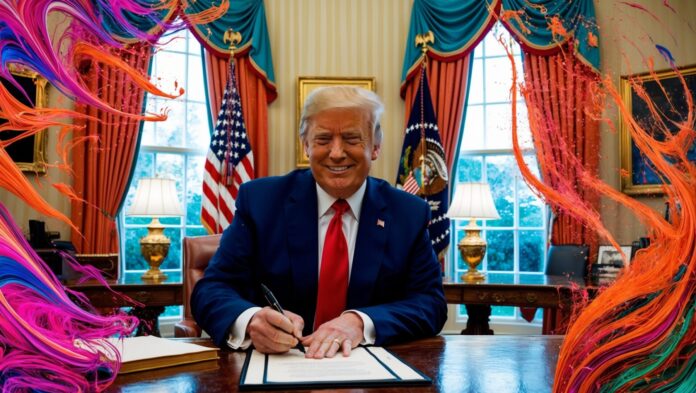When I set out to write How Trump Played the Media…Again, I knew I was diving into one of the most transformative political campaigns in modern history. The 2024 presidential election wasn’t just about policy differences or personality clashes—it was a battle fought in the trenches for digital triumph. As I analyzed the data, tracked the campaign’s moves, and watched how the media narrative shifted in real-time, one thing became crystal clear: Donald Trump had mastered the art of digital campaigning in ways no other politician had.
In this article, I’ll share what I discovered while researching and writing the book. From the development of the Digital Strategy Optimization Model (DSOM) to the explosion of viral content that kept Trump ahead of the game, the 2024 campaign offers essential lessons for future candidates and strategists alike.
Why Digital Campaigning Was the Game-Changer
The old rules of campaigning are dead. TV ads, radio spots, and press conferences used to be the backbone of any political strategy. But by 2024, those methods were mere accessories to the real action happening online. Social media had become the new battleground, and Trump’s team didn’t just participate—they dominated.
I remember watching the #MAGA2024 hashtag trend for days on end and realizing that this wasn’t a coincidence. Every post, meme, and video was part of a deliberate strategy to seize control of the digital narrative. In How Trump Played the Media…Again, I explain:

“Trump’s campaign didn’t just adapt to the digital space—it thrived in it. Real-time adaptation, micro-targeting, and a deep understanding of how digital communities work gave his campaign an unbeatable edge.”
It wasn’t just about winning debates; it was about owning the conversation online. And Trump’s campaign understood that better than anyone else.
The Digital Strategy Optimization Model (DSOM)
One of the most impressive aspects of Trump’s 2024 campaign was the Digital Strategy Optimization Model (DSOM)—a system designed to keep the campaign nimble, responsive, and data-driven. The DSOM worked in three phases:
- Identifying Target Audiences – Using advanced analytics to segment voters into distinct groups based on their behaviors and preferences.
- Tailoring Content for Each Group – Crafting messages that resonated deeply with each demographic.
- Real-Time Adaptation – Constantly monitoring trends and adjusting the strategy to stay ahead.
Every time the campaign needed to pivot, the DSOM allowed it to react faster than the opposition. While traditional campaigns were still crafting their next press release, Trump’s team was already pushing out personalized content to millions of voters.
If you want to learn how data-driven strategies are reshaping modern elections, I recommend checking out Data-Driven Campaigns: The Future of Politics.
How Social Media Became Trump’s Most Powerful Tool
I’ve seen firsthand how social media can amplify a message faster and farther than any TV network. During the 2024 campaign, Facebook, Twitter, and TikTok weren’t just tools—they were essential parts of the campaign strategy. The digital battlefield wasn’t just where voters discussed politics—it was where they made up their minds.
In one of the most telling moments of the campaign, the hashtag #MAGA2024 went viral, generating millions of impressions across multiple platforms. It wasn’t just random—it was a coordinated effort to dominate the conversation. As I wrote in the book:
“The brilliance of Trump’s social media strategy was that it felt both top-down and bottom-up at the same time. The campaign created the framework, but supporters carried the message forward, making it feel organic and authentic.”
Memes and viral videos played a crucial role in this. Supporters created funny, relatable content that spread like wildfire, often outperforming expensive traditional ads. Want to explore how memes are reshaping political discourse? Check out The Rise of Memes in Political Campaigns.
Micro-Targeting: Speaking to Every Voter Individually
Micro-targeting was another major factor that set Trump’s campaign apart. No more generic campaign ads aimed at everyone. Instead, the campaign delivered customized messages that spoke directly to individual voter concerns.
Here’s how it worked:
- Rural voters received ads about agricultural subsidies and trade policies.
- Suburban parents were targeted with messaging about school choice and parental rights.
- Young professionals saw content about job growth and entrepreneurship.
This wasn’t just smart—it was revolutionary. Every voter felt like the campaign understood their specific needs and concerns.
But this kind of precision isn’t without controversy. While micro-targeting is effective, it raises important ethical questions about privacy and manipulation. If you’re curious about the darker side of this strategy, I recommend The Ethics of Micro-Targeting in Politics.
The Power of Real-Time Adaptation
If there’s one lesson every campaign should learn from 2024, it’s this: Adapt or lose.
One of the campaign’s greatest strengths was its ability to respond to new developments instantly. Whether it was addressing a crisis, countering an opponent’s statement, or riding the wave of a viral trend, the campaign was always ready to pivot.
A perfect example? When concerns about rising inflation dominated online conversations, Trump’s team responded within hours. They released targeted ads highlighting his economic policies and criticizing the current administration’s handling of the issue. Those ads struck a nerve with voters who were already feeling the pinch of higher prices.
For more on how real-time adaptation plays a role in modern politics, check out Crisis Communication in Politics.
Grassroots Digital Engagement: The Secret Weapon
While much of Trump’s digital strategy was top-down, grassroots engagement was equally important. Supporters created their own content—videos, memes, and testimonials—that often went viral. This type of organic content felt more authentic than polished ads and helped reinforce the campaign’s message.
“When a Michigan farmer posts a video about how Trump’s trade policies helped stabilize dairy prices, that’s far more persuasive than any press release,” I wrote in How Trump Played the Media…Again. “These personal stories became the backbone of the campaign’s digital strategy.”
Lessons for Future Campaigns
If I had to sum up the lessons from the 2024 campaign in a few key points, they’d be these:
1. Embrace Data Analytics
Every campaign must invest in data-driven strategies. The DSOM model proves that continuous optimization is the future of political campaigns.
2. Go All-In on Social Media
Social media is no longer optional. Candidates must learn how to create engaging, shareable content to stay competitive.
3. Balance Agility with Consistency
Real-time adaptation is essential, but it must always align with the campaign’s core message.
4. Empower Supporters
Grassroots content is more effective than top-down messaging. Give supporters the tools they need, and they’ll carry the message further than you ever could.
The Future of Digital Campaigning
The 2024 election changed the game forever. As I write in How Trump Played the Media…Again:
“Campaigns that ignore digital strategy will become irrelevant. This isn’t a trend—it’s the new reality of politics.”
For anyone involved in politics—whether you’re a candidate, strategist, or just a curious voter—I highly recommend studying the 2024 campaign closely. It’s the blueprint for the future.
To learn more about these strategies and how they reshaped modern politics, be sure to check out How Trump Played the Media…Again.




